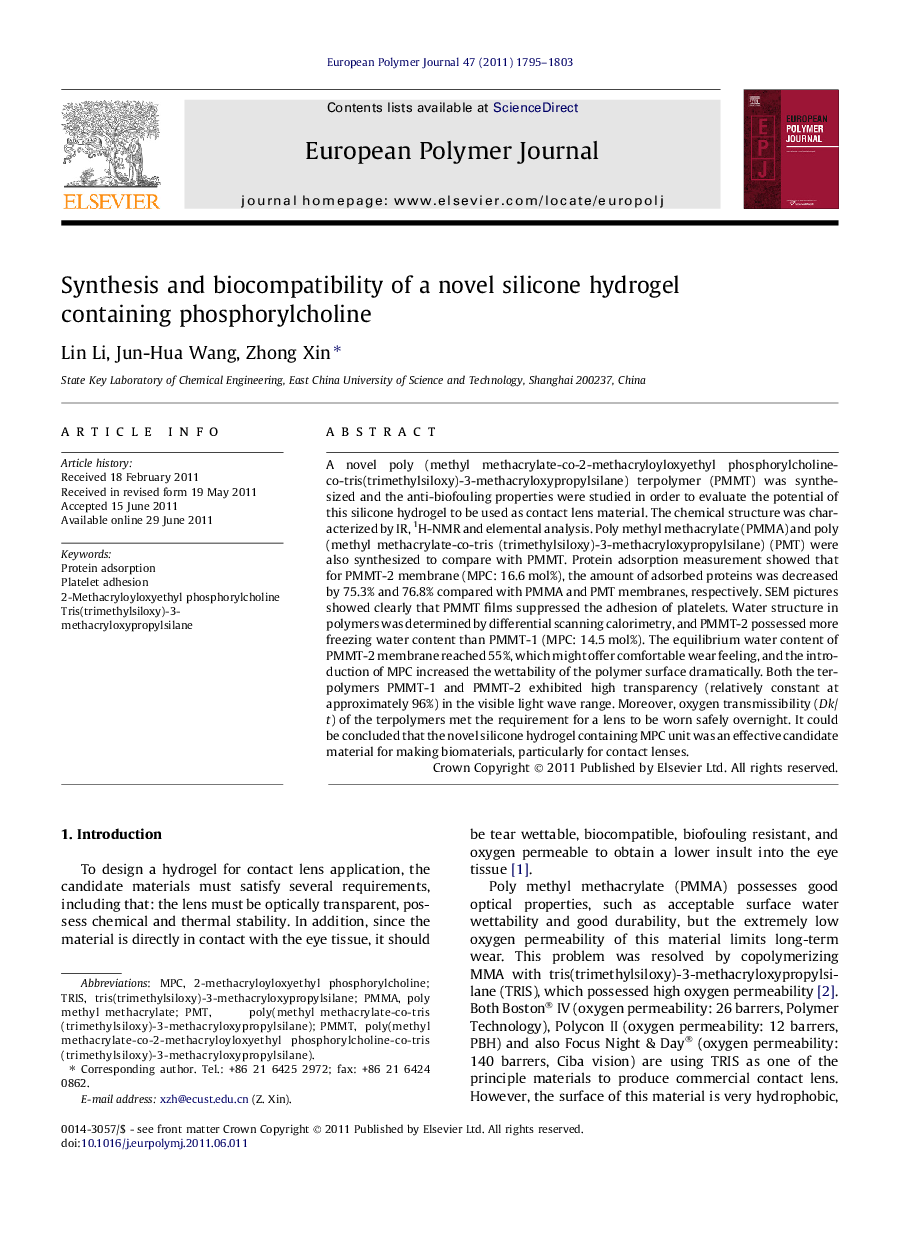| Article ID | Journal | Published Year | Pages | File Type |
|---|---|---|---|---|
| 1396013 | European Polymer Journal | 2011 | 9 Pages |
A novel poly (methyl methacrylate-co-2-methacryloyloxyethyl phosphorylcholine-co-tris(trimethylsiloxy)-3-methacryloxypropylsilane) terpolymer (PMMT) was synthesized and the anti-biofouling properties were studied in order to evaluate the potential of this silicone hydrogel to be used as contact lens material. The chemical structure was characterized by IR, 1H-NMR and elemental analysis. Poly methyl methacrylate (PMMA) and poly (methyl methacrylate-co-tris (trimethylsiloxy)-3-methacryloxypropylsilane) (PMT) were also synthesized to compare with PMMT. Protein adsorption measurement showed that for PMMT-2 membrane (MPC: 16.6 mol%), the amount of adsorbed proteins was decreased by 75.3% and 76.8% compared with PMMA and PMT membranes, respectively. SEM pictures showed clearly that PMMT films suppressed the adhesion of platelets. Water structure in polymers was determined by differential scanning calorimetry, and PMMT-2 possessed more freezing water content than PMMT-1 (MPC: 14.5 mol%). The equilibrium water content of PMMT-2 membrane reached 55%, which might offer comfortable wear feeling, and the introduction of MPC increased the wettability of the polymer surface dramatically. Both the terpolymers PMMT-1 and PMMT-2 exhibited high transparency (relatively constant at approximately 96%) in the visible light wave range. Moreover, oxygen transmissibility (Dk/t) of the terpolymers met the requirement for a lens to be worn safely overnight. It could be concluded that the novel silicone hydrogel containing MPC unit was an effective candidate material for making biomaterials, particularly for contact lenses.
Graphical abstractFigure optionsDownload full-size imageDownload as PowerPoint slideHighlights► The wettability of the polymer surface was improved by the introduction of MPC. ► The amount of adsorbed proteins was reduced by the introduction of MPC unit. ► The films exhibited high transparency (96%) in the visible light wave range. ► TRIS unit played a valuable role to improve the oxygen transmissibility.
